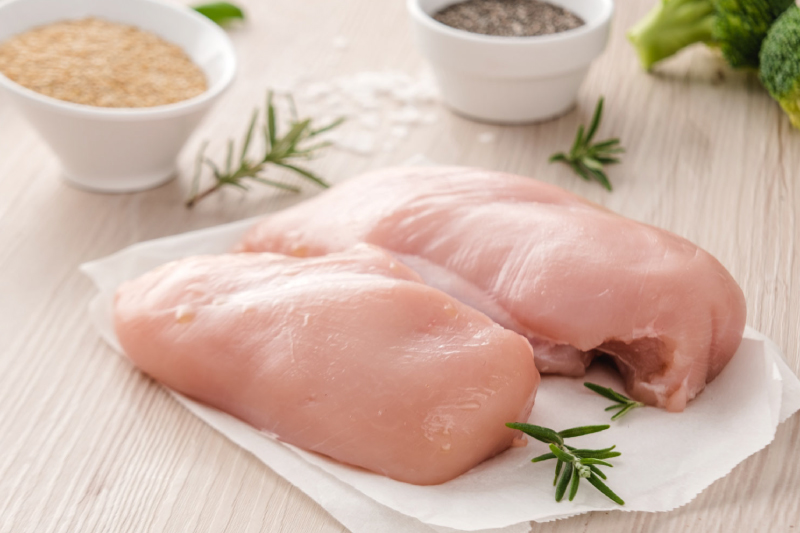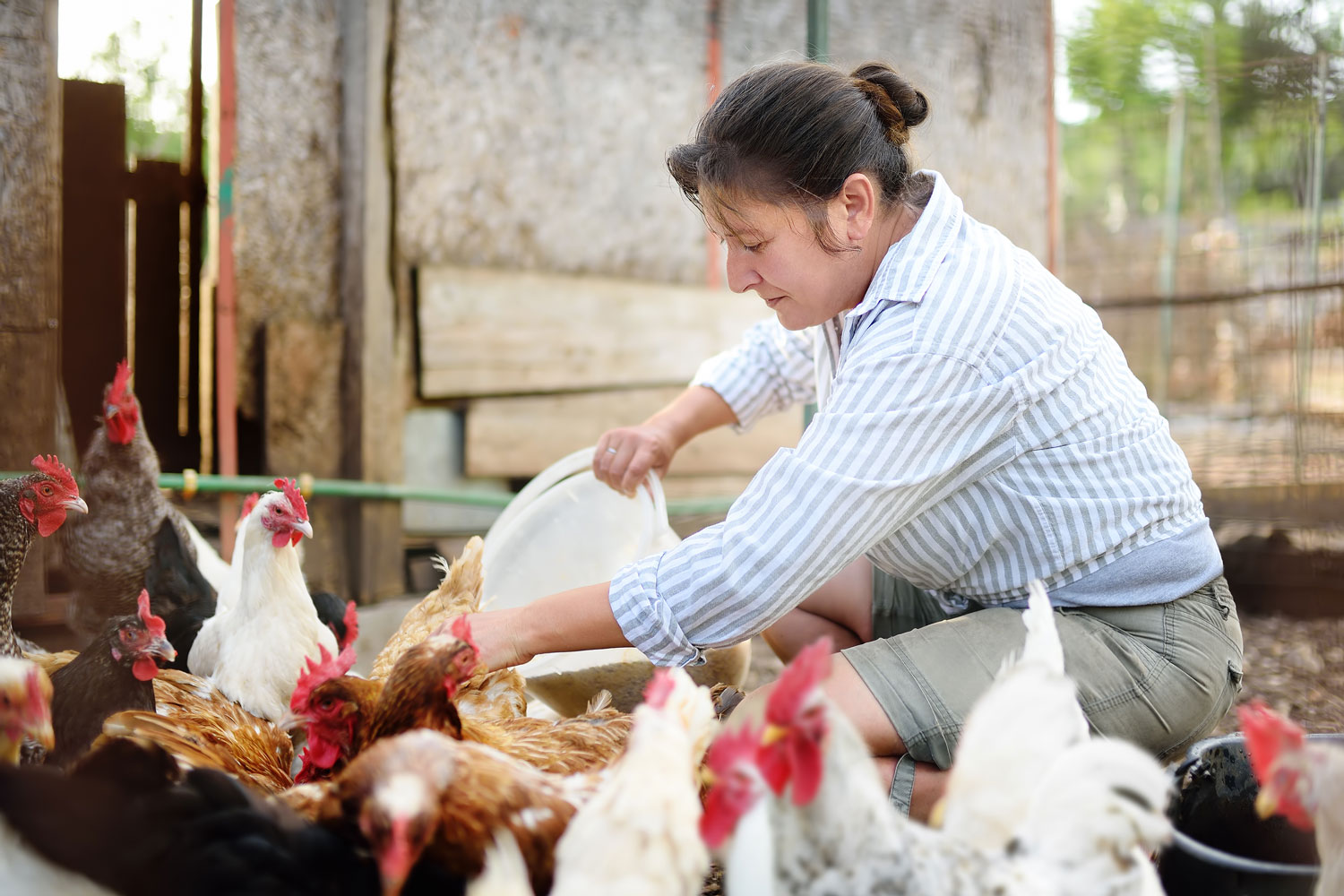
Choosing the right poultry for your restaurant is one of the biggest factors for your success. As chicken is one of the most popular forms of protein globally, incorporating it into your restaurant menu is a must.
However, there is more to chicken meat than meets the eye. So, in order to get the most out of your chicken, we have come to you with an in-depth guide on different types of industrial chicken and how to buy the freshest one. So without any further ado, let us dive right in.
Although it might seem like a straightforward question, the variety of chicken species is unclear.
Breeds within each nation are also recognized by other standards, including the British Poultry Standard and the Australian Poultry Standard, and much more. The “genuine” breed’s genetic integrity is preserved thanks to the standards set by these nations.
However, many other kinds have been created by backyard or subsistence growers all throughout the world that goes beyond these standards.
In order to enhance specific traits deemed useful for human use, chickens are carefully bred. Chickens are frequently kept as pets or bred for their meat or eggs. Some breeds are more economically advantageous for farmers because they grow rapidly while consuming relatively little food. Other breeds lay larger or more eggs without showcasing much physical growth.
A cross between the Plymouth Rocks and the Cornish hens is the go-to breed of chicken bred for meat. Bigger pectoral muscles, or the prized white breast meat, are produced by these hybrids thanks to careful breeding. These are the kind of white-feathered birds with red wattles that appear in cartoon commercials for well-known chicken restaurants.
The layer chickens that are typically observed on factory farms are basically hybrid White Leghorns. When used in industrial settings, these hens can lay up to 300 eggs during their first year, which is typically the bird’s lifespan. That being said, in the wilderness. these chickens can live even up to a decade.
Contrary to popular belief, not all chicken breast types have the same flavor. In fact, some claim that chickens kept in pasture or of heritage breeds have distinctive flavors.
There’s also something to be said about how a chicken is bred, even though the taste differences between breeds aren’t always apparent. All of this suggests that some chicken breeds, such as the Bresse, are praised for their exquisite flavor.
Therefore, if you’re searching for something fresh, do some research and find out what other local experts have to say about raising delectable chicken breeds.
However, opting for a Cornish cross hen or Rangers is always a safe bet.
The better option than water immersion cooling is air chilling. Chickens are moved through a succession of chill tunnels cooled with pure cold air as part of the USDA Certified Pure air chilling process, never being exposed to chemicals. The final outcome is juicy chicken that cooks more evenly and has a fresh, unadulterated flavor. Additionally, the skin cracks up to a wonderful golden-brown color because it is not soggy.
Avoid purchasing chicken if the package has excess liquid sitting in it. The excess liquid usually results from the conventional method of immersing chickens in water to chill them to an appropriate temperature. These liquids are expelled by the chicken once it is in the tray, which weakens the flavor and results in a mushy texture.
In order to avoid contaminating kitchen surfaces and equipment while trimming and deboning chicken at the restaurant, careful food safety procedures must be followed. Choose chicken that has already been cut to eliminate this problem.
Because chicken might be labeled either as antibiotic-free or grown without antibiotics, understanding the label jargon for antibiotics use can be challenging.
The USDA mandates that producers follow a waiting period to guarantee that antibiotics are no longer functional before chicken can be labeled as antibiotic-free. The assurance that the hens were never given antibiotics during their entire life can only be said if they were raised without them.
This seal can be seen on chicken that has been produced and fed according to the Non-GMO Project’s standards for certified organic and non-GMO diets. A nonprofit organization called The Non-GMO Project offers third-party certification and labeling for non-GMO products and foods. Programs that are certified as organic must use non-GMO grains.
This word denotes that a solution was injected into or left on the chicken during preparation. A flavored liquid, such as saltwater or diluted chicken broth, is sometimes injected into the chicken during processing. These modifications may include nitrates, nitrites, and MSG; they also frequently increase the sodium content and mask the chicken’s natural flavor.
A good quality chicken will have the four qualities listed above. So, if your chicken meat has the qualities listed below, know that you are using nothing but the best chicken quality from a reputed chicken breast supplier.
Verify the color of the chicken meat, paying special attention to any gaps like the thigh and the area under the wings. If the chicken is pink, it is fresh. The chicken has probably been lying for a while if it seems translucent or grey.
Pick chicken that is firm and springy, as this indicates that it is probably fresh. If the chicken’s flesh is excessively rigid or doesn’t return to its former shape after being squeezed with your finger, don’t buy it.
The quantity of water that is kept in a cooked type of meat determines how juicy it is. The juiciness can make or break your experience with a chicken burger. Juiciness enhances flavor, assists in softening meat to make it easier to digest, and encourages salivation in the mouth. Juiciness is determined by lipid content and water retention. Water is held in by marbling and fat all-around the borders.
Chicken Flavor is a flavor made from yeast extract that imparts chicken flavor to organic products. It has a modest salt content and includes real chicken broth. Packaged foods, frozen dinners, gravies, stews, stews, sauces, and soups can all use this product.

The technique of poultry processing entails cleaning, plucking, removing paws, and other procedures that prepare the chicken carcass to be used in other processes.
Only the carcasses or flesh sections with bones that are the most essential for the creation of semi-finished goods are left. Every carcass is carried to the conveyor before being placed on moving tips that look like trays.
The labor force transports them away from the conveyor, where they then travel to the cutting area to be separated into the required components. Production technology accounts for the requirement for hygienic cleaning,
The next task performed by workers is cutting off pieces from carcasses.
First, the wings are severed using the specified technological procedure.
This enables precise and error-free cutting off of each wing. The following group of workers remove the legs and breasts and transfers the body without halting.
They are also terminated in the designated order. Tendons join the bones of chickens. It’s simple to separate the bones with a knife if you do it correctly, but if you don’t, you risk wasting a great deal of time and even ruining the food.
Additionally, the industrial chicken breast is immediately examined for any remaining bone fragments after the cutting procedure.
The breast then drops onto a conveyor belt that has been properly made. When the wings are divided, they also drop onto a conveyor belt. Since the shoulder portion has more meat than the other parts, it will be divided. The wing tips and central portions can also be separated.
As long as there is a continued need for low-cost eggs and chicken ordering on a worldwide scale, factory farms will continue to breed chickens. If you are a restaurant owner looking for the best chicken quality to serve your customers the juiciest tender chicken meals, then sign up on Watermelon today.
With a curated collection of the most reputed chicken breast supplier on the platform, all your poultry needs will be taken care of without any worry about quality.
Join our ecosystem and revolutionize your F&B business today.
Join our ecosystem and revolutionize your F&B business today.